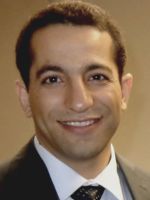Cardiovascular
Sleep apnea hypoxic burden predicts cardiovascular disease, mortality
August 10, 2023
3 min read
Source/Disclosures
Disclosures:
NHLBI, the National Center for Advancing Translational Sciences, the National Institute on Aging and the National Institute of Arthritis and Musculoskeletal and Skin Diseases partially supported this study. Azarbarzin reports receiving grant support from Somnifix and serving as a consultant for Apnimed, Respicardia and Somnifix. Apnimed is developing pharmacological treatments for obstructive sleep apnea. Please see the study for all other authors’ relevant financial disclosures.
Key takeaways:
- The risk for cardiovascular disease increased with greater hypoxic and ventilatory burdens.
- Ventilatory burden explained around 75% of variation in hypoxic burden.
Obstructive sleep apnea-related increases in hypoxic and ventilatory burdens heightened the risk for cardiovascular disease, according to results published in American Journal of Respiratory and Critical Care Medicine.
Ali Azarbarzin
“Obstructive sleep apnea is characterized by the frequent collapse of the upper airway leading to interrupted breathing (or lack of ventilation) during sleep,” Ali Azarbarzin, PhD, assistant professor of medicine in the division of sleep medicine at Harvard Medical School, told Healio. “These periods of interrupted breathing are often followed by drops in blood oxygen level and/or arousals from sleep. Current approaches do not quantify the magnitude of these breathing-related disturbances and therefore are limited to capture the risk of cardiovascular disease, for example.

“In this study, we attempted to better quantify the degree of interrupted breathing (‘ventilatory burden’), the total drop in blood oxygen level (‘hypoxic burden’) and the total duration of awakening (‘arousal burden’),” Azarbarzin added.
Azarbarzin and colleagues evaluated baseline polysomnogram data of 1,973 adults (median age, 67 years; 46.4% men; 36.5% white) from the Multi-Ethnic Study of Atherosclerosis (MESA) study and 2,627 men (median age, 76 years; 90.7% white) from the Osteoporotic Fractures in Men (MrOS) study to understand how hypoxic burden, ventilatory burden and arousal burden are each related to incident CVD and mortality.
Researchers also sought to find out how much variation in hypoxic burden was explained by ventilatory burden, baseline SpO2, visceral obesity and lung function measures.
Compared with the MrOS cohort, the MESA cohort had a lower baseline hypoxic burden (43.8% min/hour vs. 37.5% min/hour), median ventilatory burden (457% eupnea × min/hour vs. 318% eupnea × min/hour) and arousal burden (7.5% sleep time vs. 7.2% sleep time).
Median follow-up was 6.9 years in MESA and 9.4 years in MrOS.
Within these periods, researchers observed 110 new primary cardiovascular events in MESA — including myocardial infarction, resuscitated cardiac arrest, stroke and death related to coronary heart disease or stroke, defined as incident hard CVD — and 382 new events, including congenital heart disease, cerebrovascular disease events, peripheral vascular disease, other cardiovascular disease events and any heart failure, in MrOS.
In both cohorts, researchers found significant links between incident CVD and hypoxic and ventilatory burdens in Cox regression models adjusted for age, sex, race, BMI, hypertension, diabetes, smoking status and wake SpO2.
Specifically, every one standard deviation increase in hypoxic burden was associated with a 45% (95% CI, 14%-84%) higher risk for incident hard CVD among adults in MESA, and a 13% (95% CI, 2%-26%) higher risk among men in the MrOS cohort. The risk for all-cause mortality also significantly increased with greater hypoxic burden in the MESA cohort (adjusted HR = 1.24; 95% CI, 1.05-1.47).
The same rate of increase in ventilatory burden was linked to a 35% (95% CI, 9%-67%) greater risk for incident hard CVD in the MESA cohort and a 12% (95% CI, 1%-25%) greater risk in the MrOS cohort. Similar to hypoxic burden, ventilatory burden was significantly linked to all-cause mortality in the MESA cohort (aHR = 1.19; 95% CI, 1.02-1.4).
Although all-cause mortality was not significantly linked to an increase in hypoxic burden or ventilatory burden following adjustments in the MrOS cohort, the risk for cardiovascular death was heightened with an increase in hypoxic burden (aHR = 1.24; 95% CI, 1.11-1.37) and ventilatory burden (aHR = 1.16; 95% CI, 1.05-1.28).
“Hypoxic burden was the strongest and most consistent predictor of risk, confirming recent findings from our group and others,” Azarbarzin told Healio.
Arousal burden was not significantly linked to cardiovascular disease in either cohort, which was an unexpected finding according to Azarbarzin.
“In OSA, arousals are used to measure sleep fragmentation which in prior experimental studies was shown to be associated with elevated blood pressure; however, it is possible that the noise associated with measurement of arousals makes arousal-related metrics less precise,” he told Healio.
Notably, exploratory analyses showed that ventilatory burden explained 78% of the variation in hypoxic burden in the model adjusted for age, race and BMI, and this continued to be found following adjustments for all variables, with ventilatory burden explaining 74% of hypoxic burden variation.
In the fully adjusted model, BMI only explained 6% of variations in hypoxic burden whereas wakefulness SpO2 and race each only explained 2%, according to researchers.
“These findings are based on secondary analysis of existing data,” Azarbarzin told Healio. “We need to confirm these findings in a randomized controlled trial in which these metrics are used to inform enrollment of participants into the trials.”
Reference:
For more information:
Ali Azarbarzin, PhD, can be reached at [email protected].

